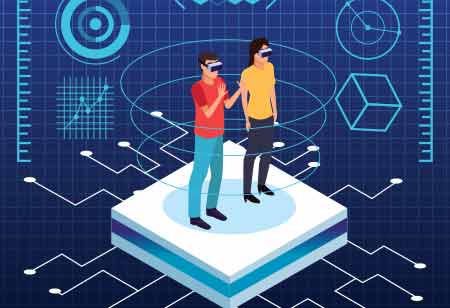THANK YOU FOR SUBSCRIBING

AI, Exoskeletons, Big Data, and Cloud Computing Lead the Charge
Michael Brown, Director of Exoskeleton Technology Development, Ralph Lauren

 Michael Brown, Director of Exoskeleton Technology Development, Ralph Lauren
Michael Brown, Director of Exoskeleton Technology Development, Ralph LaurenAI, exoskeletons, Big Data, and Cloud Computing reshape manufacturing, enhancing efficiency, safety, and sustainability through symbiotic human-machine collaboration.
FREMONT, CA: The automotive and manufacturing sectors are poised for a major transformation driven by the convergence of artificial intelligence (AI), exoskeletons, Big Data, and cloud computing. This integration transcends incremental advancement to fundamentally reshape production methodologies, labour safety standards, and overall operational efficiency.
At the heart of this revolution lies AI, functioning as the intelligent nucleus orchestrating the entire manufacturing ecosystem. Through sophisticated machine learning algorithms, the technology processes vast troves of data gleaned from sensors embedded within machinery, robots, and production lines. This data analysis enables predictive maintenance, optimised production schedules, and early detection of quality control discrepancies. AI-driven robotic systems, exemplified by welding robots capable of near-flawless welds, substantially mitigate human error and rework, fostering a symbiotic relationship between humans and machines.
Complementing AI's cognitive prowess are exoskeletons and wearable robotic suits designed to augment human capabilities on the factory floor. These exosuits provide physical support, alleviating worker fatigue, mitigating the risk of injuries, and enhancing productivity.
For instance, an exoskeleton enables a worker to effortlessly manoeuvring a hefty engine block, safeguarding their well-being while empowering them to focus on more intricate tasks. Recent advancements in exoskeleton technology yield lighter, more ergonomic designs, expanding their applicability across diverse tasks and workforce demographics.
Big Data acts as the lifeblood of AI and other intelligent systems within manufacturing environments. A deluge of data from sensors, machinery, and interconnected devices furnishes a comprehensive panorama of the manufacturing continuum. Through meticulous analysis, this data unveils patterns, prognosticates production bottlenecks, and optimises resource allocation. For instance, leveraging historical data on machinery malfunctions facilitates the implementation of predictive maintenance protocols, preempting costly downtime and fostering uninterrupted production workflows.
Empowering the infrastructure supporting these advancements is Cloud Computing, furnishing the requisite framework for storing, processing, and analysing the colossal datasets intrinsic to modern manufacturing. Cloud platforms offer scalability and flexibility, affording manufacturers on-demand access to computational resources sans exorbitant initial investments. Moreover, cloud-based AI models remain amenable to seamless updates and enhancements, ensuring manufacturers perpetually leverage cutting-edge innovations.
The synergy engendered by these technologies engenders a potent feedback loop. AI algorithms scour Big Data repositories within the cloud to optimise production parameters, generating additional data for iterative analysis. Simultaneously, exoskeletons yield invaluable insights into worker ergonomics and fatigue, enriching AI-driven training modules and refining exosuit designs. This perpetual cycle of data aggregation, analysis, and refinement begets a manufacturing ecosystem in perpetual evolution, progressively enhancing operational efficiency.
However, amidst the promise of these advancements lie formidable challenges. Concerns regarding data security in interconnected factories necessitate robust safeguards. Additionally, ethical quandaries about workforce displacement due to automation mandate judicious navigation. The crux lies in cultivating a symbiotic human-machine collaboration paradigm, wherein AI and automation augment rather than supplant human expertise.
The convergence of AI, exoskeletons, Big Data, and cloud computing heralds a paradigm shift within the automotive and manufacturing domains. This revolution portends heightened operational efficiency, enhanced labour safety standards, and a more sustainable industrial landscape. As these technologies coalesce and evolve, anticipate further transformative strides, redefining the contours of contemporary manufacturing and shaping the products underpinning our global infrastructure.
Read Also




















ON THE DECK